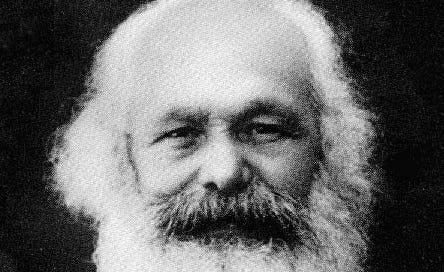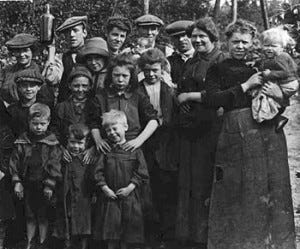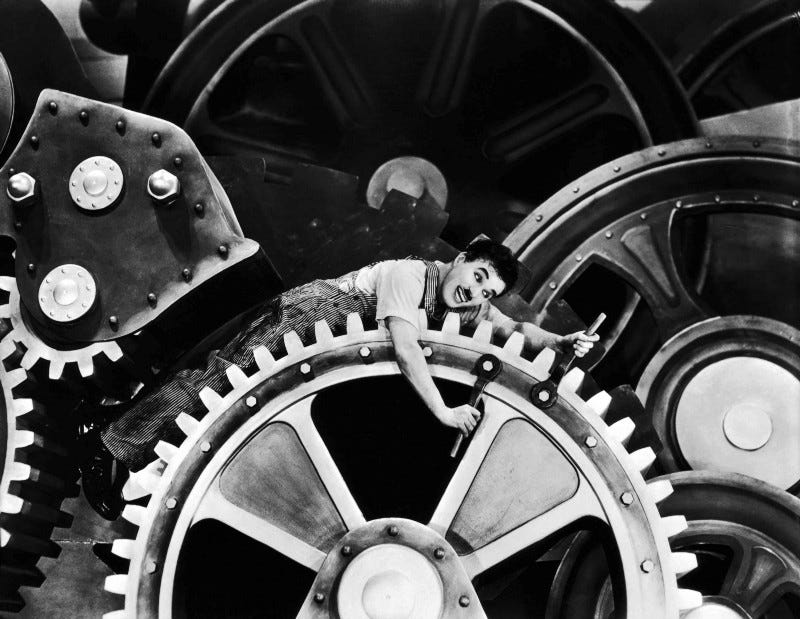A Short Essay on Simple Reproduction in Marx’s Capital
In Marx’s Capital, he defines simple reproduction as both the reproduction of base capital for the capitalist and the reproduction of labor power for the worker. Both reproductions are important to not only the survival of each individual, but, Marx argues, for society as a whole.
Simple reproduction is the starting engine for the process of societal production and consumption which defines capitalism. As Marx says, “no society can go on producing, in other words no society can reproduce, unless it constantly reconverts a part of its products into means of production, or elements of fresh products.”
For Marx, the production and consumption of society are both held by one another in a balance that necessitates reproduction. “A society,” says Marx on page 711, the second sentence of the chapter devoted to simple reproduction, “can no more cease to produce than it can cease to consume.” Reproduction of this kind, i.e. simple reproduction, is a combination of consumption and production.
For the capitalist, in this theoretical model Marx has set up to explicate the concept of simple reproduction as applies to capitalism (as far as I understand it, Capital is an interconnecting web of theories designed to show, as a whole, capitalism works. Once you stand back and view the system with the tools Marx gives you, the picture is complete), the most basic reproduction he will take part in is the reproduction of capital which he has fling into the market in the form of goods which his constant capital and purchased labor has created.
There is no profit in this reproduction more than the profit of capital that the capitalist needs to maintain his health and heartiness, his subsistence. That is the sole profit of his excursion into the market and is therefore the simplest of reproductions he can take part in, the more complex reproduction being the allocation of more capital and therefore more production, monopolization of a market, or other such adventures of capitalism.
For the worker, on the other hand, simple reproduction is the process by which she reproduces the conditions and necessities of her labor power. These include, but are not limited to, shelter, food, and sleep. The worker’s family, children, artistic endeavors, cultural leanings, and other such frivolities are also necessities of simple reproduction for the worker, as her mind and soul maybe need them.
Simple reproduction for the capitalist and the worker create the terms of consumption. Their competing interests are also where simple reproduction is no longer enough for both parties. This sets up a struggle between two forces within the economic system.
First the worker: her interest is in her own reproduction of time and labor power, which is her individual consumption. Her productive consumption is her consumption of raw material by her labor, which she transforms and valorizes into commodities for the capitalist, who, in turn, has consumed her labor power.
The capitalist, having consumed both constant capital, in the form of machinery and material, and variable capital, in the form of the worker’s labor power, now is faced with a dilemma. The capitalist may well wish to continue with the simple reproduction which creates his subsistence, and, all other things being equal, his product’s price will reflect that noble urge.
However, the given social conditions of all producers will reflect the price of the commodity in question.
The capitalist is forced to be ever more engaged in the crushing down of the base means of the worker’s simple reproduction and above all his involvement in reproducing the labor he has purchased. It is here that the conflict of capitalism is seen most clearly: once the concept of workers and capitalists as entire classes, not simply individuals, is taken into account, we see that the “simple” reproduction both were involved in is now only necessary for the workers. The workers’ purpose in the capitalist mode of production is simply to create value, not to appropriate it.






